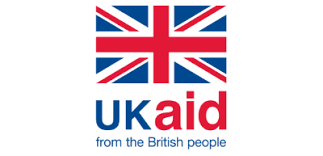
Issue 10 | June 1, 2020
Import Substitution as an Economic Response to the COVID-19 pandemic in Uganda
By Dr Susan Kavuma, Research Associate | @ACODE_Uganda
 Since the turn of the year 2020, the world has been battling with Covid-19 pandemic - an infectious disease caused by a deadly virus code named SARS-COV-2, which was announced by the World Health Organisation (WHO) on 30th January 2020. One of the major outcomes of the Covid-19 pandemic has been a paradigm shift where countries have become inward looking. At the beginning of 2020, Covid-19 hit several countries, spontaneously stretching their health systems. Many countries such as Italy, Spain, U.K, France, and United States of America had to contain a very fast spreading coronavirus in their populations. The exponential increase in infected persons and death due to Covid-19 resulted into a surge in the demand for medical supplies such as test kits, test reagents, gloves, sanitizers, face masks, personal protective equipment (PPE) and ventilators that overwhelmed the available supply. This then resulted in the rationing of supplies between and within countries. Besides the surge in the number of infected persons, panic buying and hoarding; the shortage in medical supplies was caused by disruptions in the supply chain due to constraints in production and logistics. In April-2020, the WHO reported that factories producing PPE had a backlog of 4-6 months of global suppliesi. The lack of sufficient supply of the required medical equipment caused countries to identify home grown solutions to the problem.
Since the turn of the year 2020, the world has been battling with Covid-19 pandemic - an infectious disease caused by a deadly virus code named SARS-COV-2, which was announced by the World Health Organisation (WHO) on 30th January 2020. One of the major outcomes of the Covid-19 pandemic has been a paradigm shift where countries have become inward looking. At the beginning of 2020, Covid-19 hit several countries, spontaneously stretching their health systems. Many countries such as Italy, Spain, U.K, France, and United States of America had to contain a very fast spreading coronavirus in their populations. The exponential increase in infected persons and death due to Covid-19 resulted into a surge in the demand for medical supplies such as test kits, test reagents, gloves, sanitizers, face masks, personal protective equipment (PPE) and ventilators that overwhelmed the available supply. This then resulted in the rationing of supplies between and within countries. Besides the surge in the number of infected persons, panic buying and hoarding; the shortage in medical supplies was caused by disruptions in the supply chain due to constraints in production and logistics. In April-2020, the WHO reported that factories producing PPE had a backlog of 4-6 months of global suppliesi. The lack of sufficient supply of the required medical equipment caused countries to identify home grown solutions to the problem.
Several countries introduced measures to address the supply gap. The World Economic Forum reported that 80 countries, of which 72 are members of the World Trade Organisation (WTO) and 8 non-WTO members, banned or limited the export of face masks, protective gear and gloves. The imposed export restrictions left import-reliant countries at a huge risk of experiencing shortage of medical supplies. It should be noted that export bans and restrictions are prohibited among WTO member countries except in exceptional circumstances that should be temporary. In Europe, the U.K government gave blueprints to automobile companies such as the Airbus, Jaguar, Land Rover and Rolls-Royce to begin producing ventilators for COVID-19 patients. Similarly, automotive companies in USA such as Ford and General Motors began producing ventilators and respirators.
In Uganda, both the private sector and government swung in action and started addressing the supply gap in medical supplies. Teams of researchers from Makerere University led by Dr. Misaki Wayengera, a Bio-Entrepreneur and Founder of Restrizymes Biotherapeutics ‘U’ Ltd and Prof. Vinand Nantulya of Astel Diagnostics Limited, swung into motion to develop Rapid Diagnostic Test kits (RDTs) for Covid-19 whose performance are at various stages of being validated and if passed, will soon be accredited by World Health Organisation (WHO). The Covid-19 test kits would not only reduced the time it takes to produce the results from 6-4 hours to 1-2 minutes and would also reduce the cost of the kit from US$65 to US$ 1.07ii. On the other hand, both public companies such as the National Enterprise Company (NEC) and private companies such as Nyanza Textile Industries Limited (Nytil) and Nice House of Plastics Limited among others started producing low cost face masks, sanitizers and PPEs to mitigate the shortage of supply in such products. Similarly, Makerere University–Resilient Africa Network (RAN) in collaboration with the School of Public Health – Kiira Motors Corporation and Ministry of Science, Technology and Innovation (MOSTI) are in the process of developing a low cost ventilator. Likewise, Cipla Quality Chemicals Limited is planning to produce anti-malaria drugs such as hydroxychloroquine and erythromycin which are used to treat Covid-19 patients but are currently imported from India.
The need to identify home grown solutions has brought to the fore the relevance of the inward-looking strategy of import substitution. Import substitution (IS) occurs when formerly imported goods are produced domestically. This strategy was initially adopted by countries in Latin America such as Brazil as a response to shortages in the supply of manufactured goods after World War II. The policy later became attractive to developing countries in other parts of the world such as South-East Asia for example South Korea and China that wanted to reduce their dependency on developed countries. The countries that adopted IS used an assortment of policy measures such as tariffs, quotas, exchange controls and administrative measures to promote domestic production of formerly imported goods with varying degrees of success hinged on supportive financing mechanisms, scientific development and export orientation of IS industriesiii.
In the first decades after independence, Uganda pursued an import substitution policy and introduced several measures to protect infant industries. These measures included: an over-valued exchange rate aimed at limiting the importation of imported finished products while favouring the importation of intermediate goods. Tariffs on domestically produced goods which were formerly imported were increased. The Import substitution firms had special access to loans and equity capital through the Uganda Development Corporation (UDC) and were given quotas to foreign exchange to import inputs. It is reportediv that at the time Uganda pursued an import substitution strategy, the economy performed well and the country enjoyed a trade surplus of £29.4 million (about UGX 138.73 trillion at today’s exchange ratev). However, ever since Uganda stopped the import substitution strategy in the 1980s, it has recorded a trade deficit.
However, the IS strategy has several challenges that need to be addressed if it is to be successful. First is the foreign exchange constraint which arises as a result of importing raw materials and capital goods used in production. To address this problem, countries are advised to promote industries that use locally sourced raw materials and graduate to firms that can produce the capital goods required to produce manufactured goods. To further ease the foreign exchange constraints, the country should export the manufactured goods to earn foreign exchange that can be used to import capital goods required in productionvi.
Another criticism of the IS strategy is the possibility of reducing or eliminating free trade by favouring use of domestically produced goods rather than exporting the products. It has been notedvii that domestic demand is a necessary condition for exporting and therefore should not be seen as a deterrent to free trade. Products have to be first consumed locally to establish their quality standards and address any product failures. On the other hand, it has also been notedviii that the transition from exporting primary products to import substitution is not a lack of dependence on the international economy but rather a change in the nature of dependence. The change is experienced in the composition of imports. Import substitution should not be viewed as an alternative to export promotion but rather the two strategies should be pursued concurrently. Therefore, on the onset, it is prudent to have an IS strategy that envisages IS firms becoming exporting firms in future.
The IS strategy is also criticised for promoting protectionist policies. Infant industries are often protected using the tax system which is criticised for creating economic distortions such as allocative inefficiency as a result of the price not being determined by the marginal cost. Besides, import taxes are a major source of revenue in most developing countries, while subsidies are susceptible to abuse or rent seeking which can exacerbate corruption and lead to inefficient allocation and distribution of resources. On the other hand, protected firms can become monopolies which are usually inefficient and may erode the gains of import substitution. However, in the initial stages of IS, it may be inevitable to pursue protectionist policies targeting specific sectors where the IS firms belong, although the protectionist policies should be revised in the intermediate and long-run term to promote the efficiency of firms and welfare of citizens.
In conclusion, Uganda should not lose the gains from increased domestic production of medical supplies that have been reaped during the advent of the COVID-19 pandemic. Rather, the import substitution in the health sector should be encouraged to continue and allowed to permeate to other sectors of the economy. The support offered to the health sector should be extended to other promising sectors such as textile and agro-processing industries that have backward and forward linkages in the economy. Given that government is the largest buyer in the economy, it should deliberately buy domestically produced goods to promote local industries and solicit external markets to widen the size of the market for our domestically produced goods. This resonates with the “Buy Uganda Build Uganda” (BUBU) campaign. It is encouraging that government has decided to domestically produce government security documents such as money, election materials, passports, identity cards and driving licences. The country will save foreign currency used to purchase such documents from abroad, create employment and enhance incomes of workers. However, the necessary institutional framework should be in place to guard against counterfeits that can result into wastage of resources and loss of societal welfare.
The domestic production of goods has economy-wide benefits of creating jobs when labour intensive technologies are used, it increases household incomes, reduces the import bill, promotes science and technology and improves competitiveness of the economy. However, IS should not be seen as an end in itself but rather a means of promoting industrialisation. Since Uganda is a member of WTO and therefore bound by the principle of free trade, the IS strategy should be complemented with export promotion of domestically produced goods to enable IS firms harness economies of scale. It is encouraging to note that our major trade partners (Kenya, Democratic Republic of Congo, South Sudan and Rwanda) are within the East African region with whom we can negotiate bilateral and multilateral trade agreements.
..............................
iAsian Development Bank (ADB) Policy Brief (2020). www.adb.org/publications/series/adb-briefs.
ii Allianceforscience.cornell.edu
iiiNeumann Stefan (2013). “Import Substitution Industrialisation and its Conditionalities for Economic Development- A Comparative Analysis of Brazil and South Korea. Department of International Relations and European Studies.
Alexander M. Zobov1 , Ekaterina A. Degtereva2 , Veronica Yu. Chernova3 , and Vasily S. Starostin (2017). “Comparative Analysis of the Best Practices in the Economic Policy of Import Substitution”. European Research Studies Journal Volume XX, Issue 2A, 507-520.
ivGgoobi Ramathan, Bernad Musekese Wabukala, Josehp Ntayi. “Economic Development and Industrial Policy in Uganda”.
vExchange rate 1£ = UGX 3799.6 as of 11th May 2020.
viSee Endnote ii
viiAhmad Jaleel (2012). “Import Substitution – A Survey of Policy Issues”.
viii Sunkel Osvaldo (1973). “Past, Present and future of the Process of Latin America Underdevelopment”. No. 57. Center for Afro-Asian Research of the Hungarian Academy of Sciences.
|
|









+256 312 812 150 | Leave a comment | Center for Budget and Economic Governance
Subscribe To Our News Letter | Edit Subscription | Unsubscribe